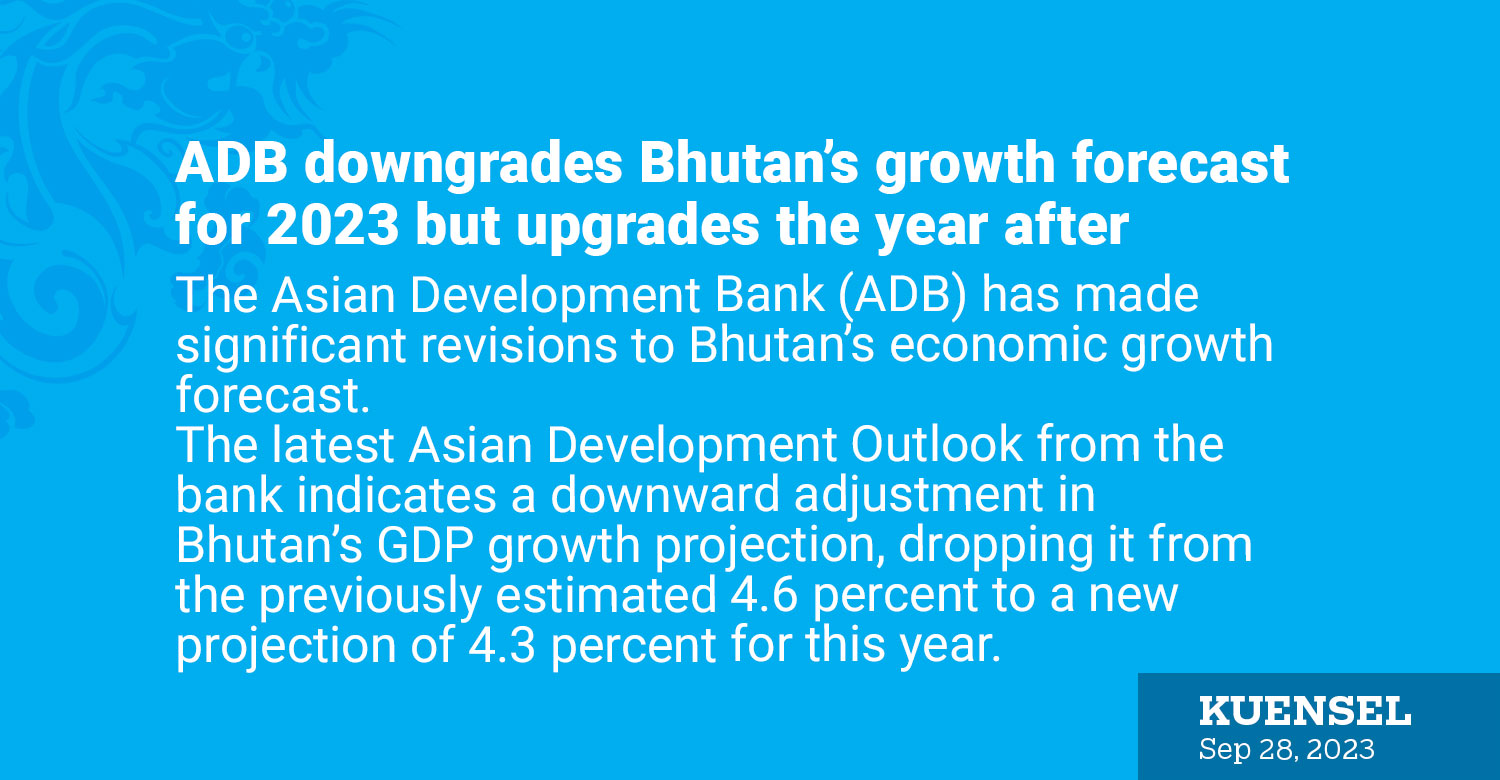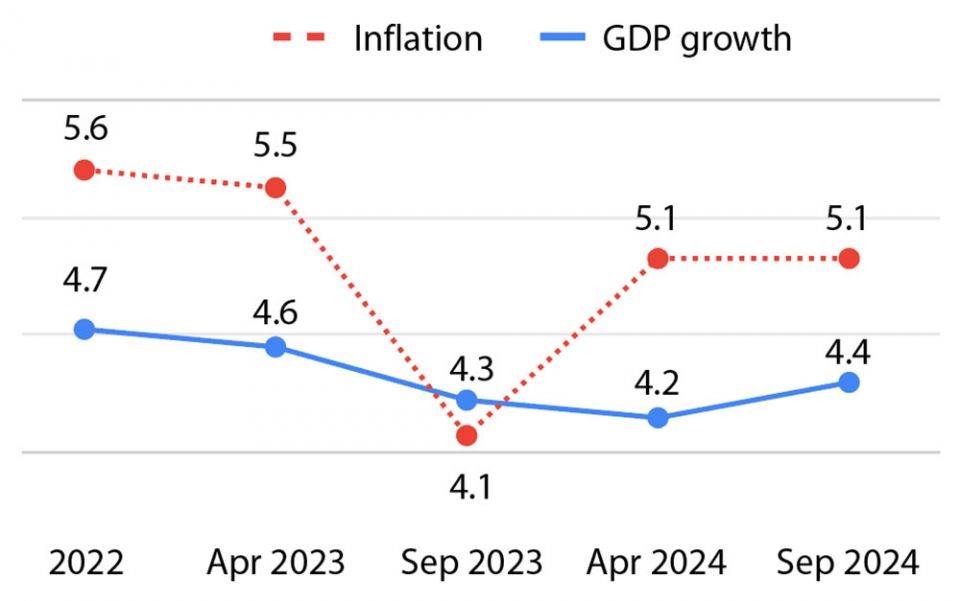
The Asian Development Bank (ADB) has made significant revisions to Bhutan’s economic growth forecast.
The latest Asian Development Outlook from the bank indicates a downward adjustment in Bhutan’s GDP growth projection, dropping it from the previously estimated 4.6 percent to a new projection of 4.3 percent for this year.
This represents a decrease of 0.3 percentage points. The adjustment was primarily driven by adverse weather conditions, particularly erratic monsoon rains that negatively impacted crop production, and a shortfall in hydropower production that affected industrial output. Hydropower and construction accounted for 26 percent of GDP in 2022.
However, the Bank forecast a slightly higher growth of 0.2 percentage points for next year to 4.4 percent from April’s projection of 4.2 percent. It is because of the opening of new hydropower plants–Nikachhu hydropower plant by the end of 2023 and Punatsangchhu-II plant by the end of 2024.
The Bank revised the agriculture growth from 3.2 percent from April’s projection as 2.8 percent. The industrial sector suffered because of a 7.4 percent fall in hydropower output year-on-year decrease in hydropower production during the first five months of the year. Industry sector’s growth was similarly revised down from 3.2 percent to 2.8 percent .

After accounting for a low base caused by the temporary shutdown of the Tala hydropower plant earlier in the year, the shortfall in hydropower output reached nearly 19 percent.
The construction sector also faced challenges, with a two percentage points reduction in growth. This reduction was a result of the suspension of credit for commercial housing and hotel projects in June. The action was taken to address nonperforming loans and conserve foreign exchange reserves.
Despite these challenges, the manufacturing sector is still projected to grow by 3.3 percent, while the mining sector is expected to contract by 1.5 percent.
The service sector, particularly tourism, is anticipated to see improvements. The ADB forecasts a 0.3 percentage point increase in the growth, driven by an expected rise in tourist arrivals.
The government implemented a new incentive on September 1, reducing the prevailing daily sustainable fee for tourists by half, which is likely to boost tourism. Tourist arrivals have shown improvement, increasing from 22 percent of pre-pandemic levels in the first quarter to 46 percent in April.
While Bhutan’s growth is heavily reliant on energy, the completion of new hydropower plants, such as the Nikachhu and Punatsangchhu-II plants, is expected to mitigate the risks associated with energy production.
However, there are still risks to Bhutan’s economic growth, including the continued deterioration of the country’s foreign reserve position, which decreased from USD 766.6 million in December 2022 to USD 549.1 million in May 2023. Imports increased by 30 percent in the first quarter of 2023 compared to the same period, while exports remained steady.
This decline in reserves continues a trend from USD 1.5 billion in March 2021. The contributing factors include higher commodity prices in 2022 and significant imports of information technology equipment since mid-2021, a portion of which is likely being used for digital asset mining, particularly Bitcoin.
Other risks include limited fiscal space and a steady emigration of skilled workers to advanced economies.
In terms of inflation, the ADB has revised down its inflation forecast for Bhutan for this year, primarily due to a mid-year drop in fuel prices and low food inflation. The first five months of this year saw headline inflation averaging 3.7 percent year on year.
Inflation is projected to increase to 4.5 percent in the second half of this year, driven by the impact of erratic monsoon on domestic agriculture, export restrictions imposed by neighbouring countries on food commodities, and anticipated global price hikes.
The inflation forecast for next year remains at 5.1 percent.












